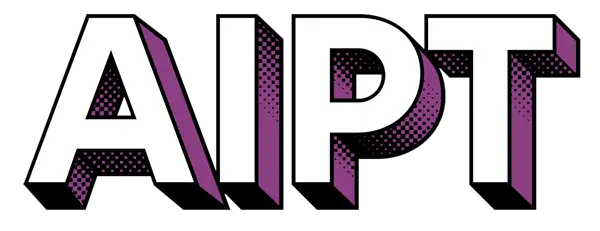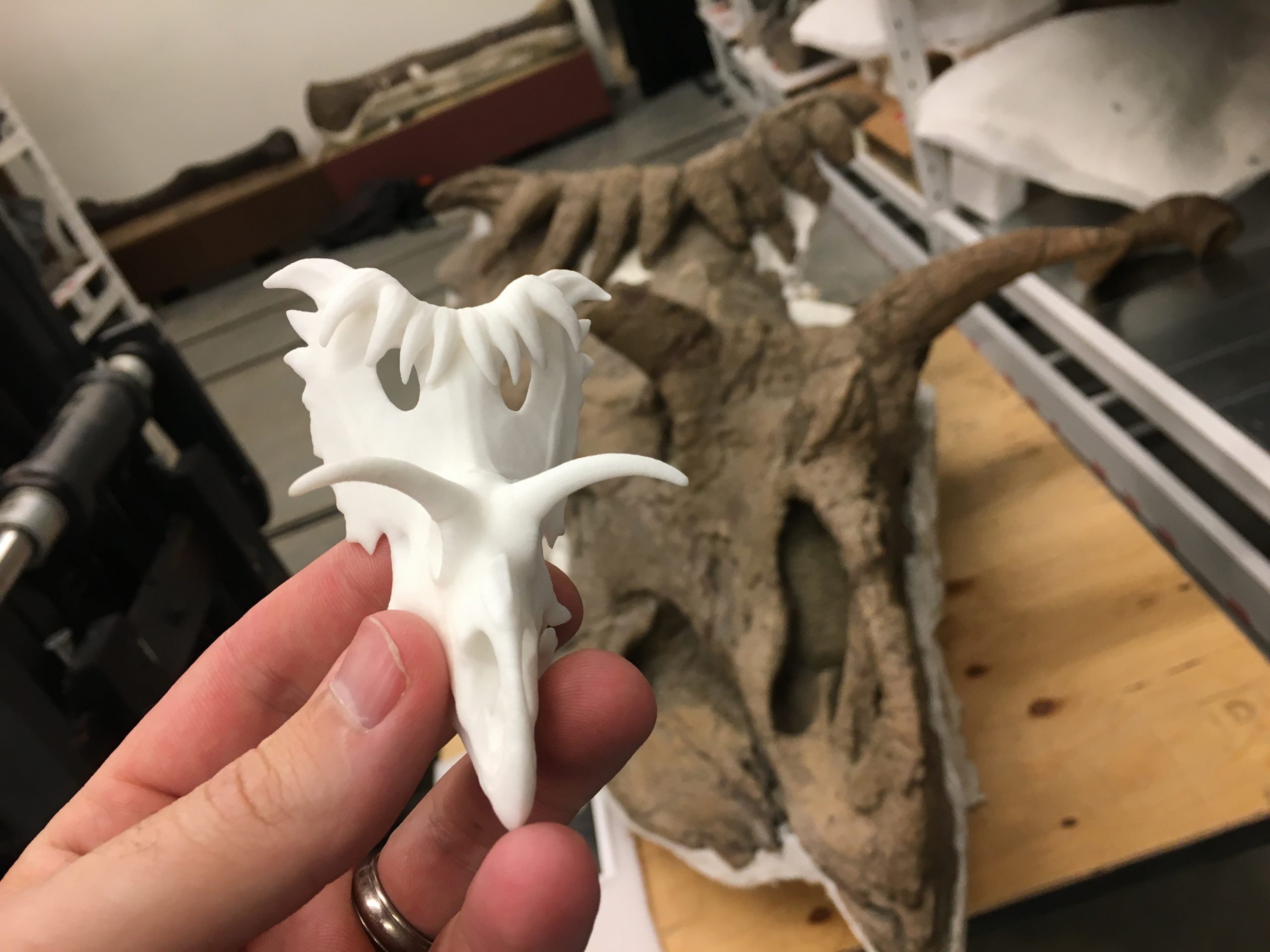As a paleontologist, I was recently asked to scientifically review some 3D-printed ceratopsian skulls (dinosaurs like Triceratops) designed by David Silva, the same person behind Creative Beast Studio and the Kickstarter-crushing, most-scientifically-accurate-ever raptor and ceratopsian models of the Beasts of the Mesozoic series.
I went scrolling through the different skulls, and noticed that a lot of them were of dinosaurs found right here in Utah. Many even have their holotype (the material a species is named from) stored near me at the Natural History Museum of Utah (NHMU).
So I decided on two different skulls that I liked. The first was the Styracosaurus, since it’s in the logo of my personal website. The second was Kosmoceratops, since I knew we had a nearly complete skull in the collections at the NHMU, and I could get access to take pictures with the actual skull. May I also recommend that if you ever happen to visit the NHMU, the ceratopsian wall is a marvel to behold.

I also happened to know the paleontologists who prepped and named many of the species. So I asked my friend Eric Lund, who was not only the discoverer, excavator, and preparator of Nasutoceratops, but he also published a description of the dinosaur and named it! He also requested Utahceratops, another dinosaur with its holotype material located in the NHMU.

The skulls are 3D prints in a very study resin. Despite being all over Utah, in and out of my pocket, they never once felt like they were going to break.
They did come in pieces, though. The lower mandibles (jaws) were unattached, and Kosmoceratops also had its horns and some of its frill detached. Because of this I did have to superglue the pieces together, which took me a little bit before I got the horns lined up just right. But after that, they have been perfect since.
Scientists have been studying different ceratopsians for more than 100 years, and it’s known that the placement and size of the horns and fenestra (openings) vary somewhat between related individuals, just like humans vary greatly across our species.
So many differences between the model and the real specimen can probably be attributed to individual quirks in the animal. That said, I’ll try to limit my nitpicking to features that should not vary between related individuals of the same species.
Kosmoceratops

Kosmoceratops richardsoni is a Late Cretaceous age dinosaur (~76 million years old) that was found in the Kaiparowits Formation of the Grand Staircase-Escalante National Monument, Utah. This ceratopsian is unique, because with 15 horns and spikes, it’s quoted at being the “horny-est dinosaur ever” (not my pun).

The skull pictured above is the only one of this dinosaur ever found, however there are some small pieces of another in the museum. I placed the 3D skull print on the lower mandible of the actual skull to get a shot with them together.

There’s an advantage to looking at the actual skull of the animal instead of a cast. Most dinosaur casts have some (minimal) scientific interpretation, because often not all of the bones are preserved, and/or they’re distorted in some fashion. You can actually see in the Kosmoceratops skull above that it’s “squished” a bit, whereas a cast of the skull would have “fixed” that and recreated what the animal might have looked like in real life.
I would say that overall the scientific accuracy of the skull is phenomenal. The attention to detail is exquisite, especially on something so small, in comparison to the original. With the strength of the materials, it’s easier to maintain accuracy on the fenestra within the skull.
The only really noticeable inaccuracies in the skull were that along the left and right sides of the frill, the model doesn’t flair out as much as the actual dinosaur does. There’s also a hole just below and a little bit behind the orbit (eye hole) that is just an indent in the model, but a full-on hole in the actual animal (called the laterotemporal fenestra).
The cranial sutures are also really difficult to make out in model, whereas they’re usually noticeable, if not obvious, in real-life fossils.
Styracosaurus

Unlike the other three skulls discussed here, Styracosaurus is the only one that is not a Utah native. Styracosaurus albertensis is a Late Cretaceous dinosaur (~75 million years old) found in the Dinosaur Provincial Park of Alberta, Canada.

The NHUM did not have any easily accessible casts of Styracosaurus to compare the model to, but they did have this mounted version. Overall, Styracosaurus is represented by many more individuals than most of the Utah ceratopsians, so it’s easier to find a “match” for various features of the model.
The scientific accuracy of this skull also being nearly flawless, but there are still a couple issues. The horn and the two central spikes off the frill (called parietal processes) may be a bit exaggerated from every specimen that I could find. And the nose horn in particular seems a bit “pointier” than it was in real life. There’s also a small protrusion of the nasal bone in front of the nasal fenestra (nostril) not present in the model.
Unlike Kosmoceratops above, the sutures are actually very well-defined on this skull, indicating that likely the modeler made a choice not to include them on Kosmoceratops. But besides those slight nitpicks, there is not much fault I can find in these models.
Nasutoceratops

Nasutoceratops titusi is a Late Cretaceous dinosaur (~76 million years old) that was found in the Kaiparowits Formation of the Grand Staircase-Escalante National Monument, Utah. Here’s what Eric (again, the discoverer and namer of this animal) had to say about it.

“Overall, the model is very good. The proportions (i.e., basal skull length vs. frill length) are great and the model does a fantastic job of capturing the crazy hypertrophied narial region. There are just a few very minor alterations that can be made. Specifically, the narial spine (i.e., the small process formed from the nasals and premaxilla) that projects anteriorly into external naris is too small but this I suspect is due to the resolution and how the model is printed.”
Utahceratops

Utahceratops gettyi is a Late Cretaceous dinosaur (~76 million years ago) that was found in the Kaiparowits Formation of the Grand Staircase-Escalante National Monument, Utah. This one’s special to my heart, because it’s named after Mike Getty, the former collections manager at the NHMU who discovered it and tragically passed away a few years ago. Here are Eric’s thoughts:

“Overall, the print is very good, and it is exciting to see the amount of detail and thought that went into the model. The proportions (i.e., frill length to basal skull length) are good, and the model shows the unique suite of characters that distinguish Utahceratops from all other Campanian chasmosaurines. Any collector of accurate dinosaur models will love this
addition.”
Eric starts to get into paleontologist-mode here, and I thought this was a fantastic breakdown of the model:
“With respect to absolute morphological accuracy there are a few areas that could be retooled. Namely, the supraorbital ornamentation (orbital horns), these are too long and pointed. The true morphology of these horns is blunt and relatively short as compared to other chasmosaurines (i.e., Triceratops), the holotype morphology of these horns provides insight into these features showing that they terminate in a blunt apex (Fig. 1).

Abbreviations: A, Anterior; ff, Frontal Fontanel; P, Posterior; PO, Post Orbital.
“Additionally, the base of the ornament is too anteroposteriorly enlarged and does not project posteriorly as much as it does in this model (Figs. 1 and 2). The aperture of the orbit would be more circular in conformation as the antorbital buttress is posteriorly displaced into the orbital cavity.”

Abbreviations: A, Anterior; ab, Antorbital buttress; L, Lacrimal; P, Posterior; PO, Post Orbital; O,
Orbit.
“Additionally, the first epiparietal that rims the midline parietal embayment is formed from the coalescence of the P1 epiparietal and a low bulbous dorsal parietal process (Fig. 3). The P2 epiparietal loci is too large, the length of the loci base is correct, but the anteroposterior axis is too long.”

Abbreviations: A, Anterior; dpp, Dorsal Parietal Process (red outline); ep1, epiparietal loci 1
(green outline), ep2, epiparietal loci 2; P, Parietal bar; p, Posterior; pfe, Parietal Fenestra.
Summary
Overall, despite the nitpicking (we were asked to give our honest, thorough, scientific opinions) both Eric and I agree that these models are fantastic work. We nitpick because we care, but as Eric said, “any collector of accurate dinosaur models will love” these.
AIPT Science is co-presented by AIPT and the New York City Skeptics.
Join the AIPT Patreon
Want to take our relationship to the next level? Become a patron today to gain access to exclusive perks, such as:
- ❌ Remove all ads on the website
- 💬 Join our Discord community, where we chat about the latest news and releases from everything we cover on AIPT
- 📗 Access to our monthly book club
- 📦 Get a physical trade paperback shipped to you every month
- 💥 And more!













You must be logged in to post a comment.